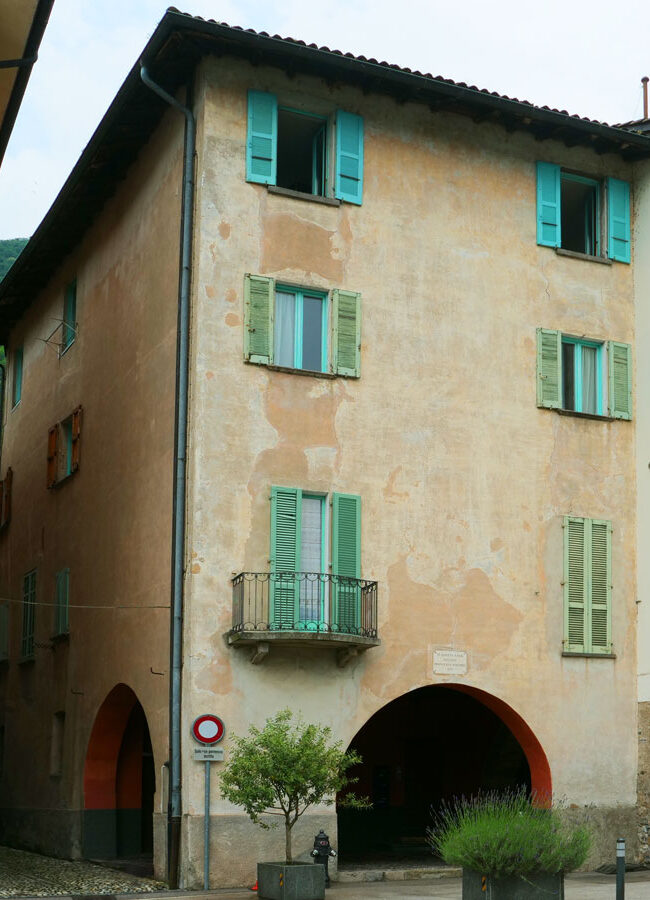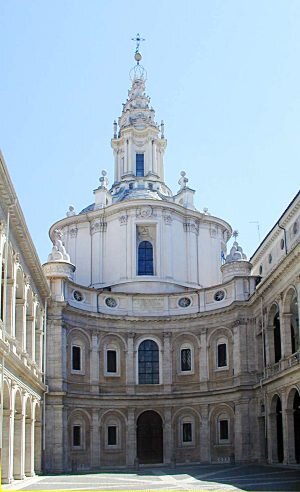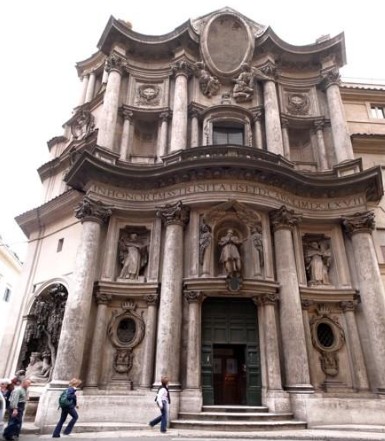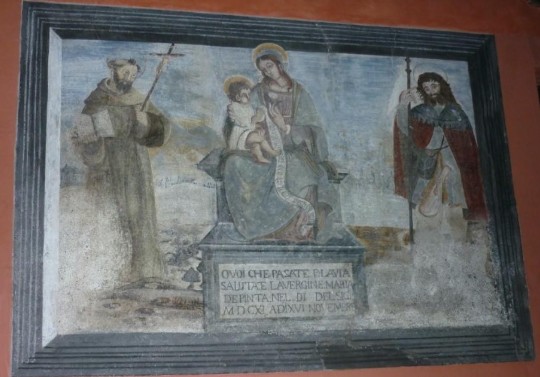4. Castelli Hause (Borromini)
On the façade of the house there is a plaque with the inscription
“Francesco Borromini was born in this building 1599”.
This is how Bissone remembers one of its most illustrious children.

The history
The history
Francesco Borromini (born under the name of Francesco Castelli) was one of the most significant representatives of Baroque architecture. His father was a humble architect serving under the Visconti family in Milan, while his mother was a descendant of the wealthy Garove family, who were related to the famous architect Domenico Fontana from Melide. Trained as a stonemason at a young age, Francesco reached Rome in 1619, a guest of Leone Garove, a relative of his mother’s, and of the celebrated architect Carlo Maderno, thanks to whom he came into contact with Lorenzo Bernini, who was in charge of overseeing the works on the Basilica of San Pietro in the Vatican. In that context, Borromini took part in the construction of St. Peter’s Baldachin. Afterwards, upon Bernini’s commendation, he was awarded the title of architect of Sapienza university, thanks to which he was put in charge of designing the Church of San Carlo alle Quattro Fontane and its adjoining convent. After multiple minor commissions, he was entrusted with the construction of the church of Sant’Ivo alla Sapienza, recognised as his most prestigious creation. Many other works marked his restless professional career, often in contrast with Bernini’s ideas.
He committed suicide in 1667, at the age of 68, and was buried, in accordance with his own express wish, in the Basilica of San Giovanni dei Fiorentini, in the same tomb as that of his beloved Carlo Maderno.

Sant’Ivo alla Sapienza (Roma)

San Carlo alle quattro fontane (Roma)

Text translation:
O you who pass by the way, greet the Virgin Mary, painted on the day of the Lord MDCXI on the day XVI November
Mural painting, dated 1611, depicting the Virgin Mary with the Child between the Saints Roch and Anthony of Padua, placed under the portico of the Borromini House.

Detail of the plaque on the facade

